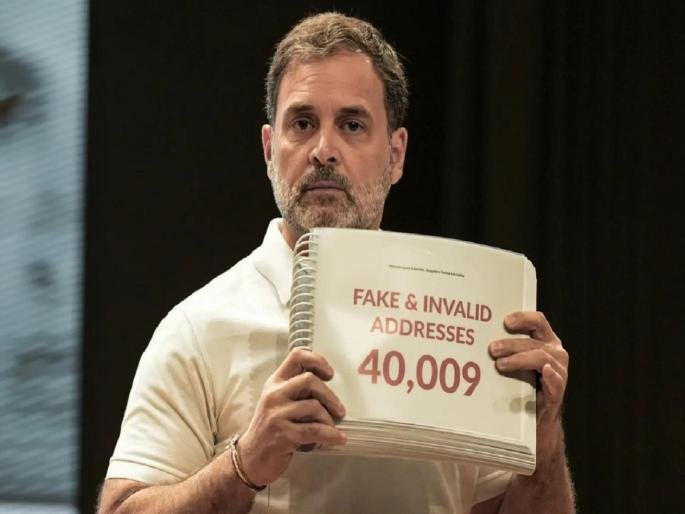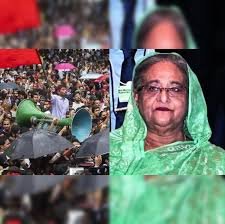
To control inflation, the Reserve Bank increased the repo rate by 0.25 percent.
Loan will be expensive, EMI will increase; Repo rate increased 6 times since May 2022
Mumbai The Reserve Bank of India (RBI) has once again increased the policy rate repo by 0.25 percent in the bi-monthly monetary policy review on Wednesday, mainly with the aim of controlling inflation. Due to this, the main policy rate has increased to 6.50 percent. Along with this, the central bank has increased the estimate of the growth rate of Gross Domestic Product (GDP) for the current financial year 2022-23 from 6.8 percent to 7 percent. At the same time, the GDP (Gross Domestic Product) growth rate has been estimated to be 6.4 percent in the next financial year.
The RBI has projected retail inflation at 6.5 per cent in the current financial year and 5.3 per cent in the next financial year. Repo rate is the interest rate at which commercial banks borrow from the central bank to meet their immediate needs. An increase in this means that borrowing from banks and financial institutions will be costlier and the monthly installment (EMI) of the existing loan will increase.
Giving information about the decision taken in the three-day meeting of the Monetary Policy Committee (MPC), which began on Monday, RBI Governor Shaktikanta Das said in a digitally broadcast statement, 'Considering the current economic situation, the MPC has decided to keep the policy rate repo 0.25. It has been decided to increase the percentage to 6.50 per cent.
He said that 4 out of 6 members of the Monetary Policy Committee voted in favor of increasing the repo rate. However, this pace of increase in the repo rate is lower than the previous five increases and the market was expecting it. RBI has increased the repo rate by 2.50 percent in total six times since May this year mainly to bring inflation under control.
Earlier, the repo rate was increased by 0.40 per cent in May and 0.50 per cent each in June, August and September and 0.35 per cent in December. The central bank mainly looks at retail inflation while deciding on the policy rate.
Loan will be expensive, EMI will increase; Repo rate increased 6 times since May 2022
Mumbai The Reserve Bank of India (RBI) has once again increased the policy rate repo by 0.25 percent in the bi-monthly monetary policy review on Wednesday, mainly with the aim of controlling inflation. Due to this, the main policy rate has increased to 6.50 percent. Along with this, the central bank has increased the estimate of the growth rate of Gross Domestic Product (GDP) for the current financial year 2022-23 from 6.8 percent to 7 percent. At the same time, the GDP (Gross Domestic Product) growth rate has been estimated to be 6.4 percent in the next financial year.
The RBI has projected retail inflation at 6.5 per cent in the current financial year and 5.3 per cent in the next financial year. Repo rate is the interest rate at which commercial banks borrow from the central bank to meet their immediate needs. An increase in this means that borrowing from banks and financial institutions will be costlier and the monthly installment (EMI) of the existing loan will increase.
Giving information about the decision taken in the three-day meeting of the Monetary Policy Committee (MPC), which began on Monday, RBI Governor Shaktikanta Das said in a digitally broadcast statement, 'Considering the current economic situation, the MPC has decided to keep the policy rate repo 0.25. It has been decided to increase the percentage to 6.50 per cent.
He said that 4 out of 6 members of the Monetary Policy Committee voted in favor of increasing the repo rate. However, this pace of increase in the repo rate is lower than the previous five increases and the market was expecting it. RBI has increased the repo rate by 2.50 percent in total six times since May this year mainly to bring inflation under control.
Earlier, the repo rate was increased by 0.40 per cent in May and 0.50 per cent each in June, August and September and 0.35 per cent in December. The central bank mainly looks at retail inflation while deciding on the policy rate.
Mumbai The Reserve Bank of India (RBI) has once again increased the policy rate repo by 0.25 percent in the bi-monthly monetary policy review on Wednesday, mainly with the aim of controlling inflation. Due to this, the main policy rate has increased to 6.50 percent. Along with this, the central bank has increased the estimate of the growth rate of Gross Domestic Product (GDP) for the current financial year 2022-23 from 6.8 percent to 7 percent. At the same time, the GDP (Gross Domestic Product) growth rate has been estimated to be 6.4 percent in the next financial year.
The RBI has projected retail inflation at 6.5 per cent in the current financial year and 5.3 per cent in the next financial year. Repo rate is the interest rate at which commercial banks borrow from the central bank to meet their immediate needs. An increase in this means that borrowing from banks and financial institutions will be costlier and the monthly installment (EMI) of the existing loan will increase.
Giving information about the decision taken in the three-day meeting of the Monetary Policy Committee (MPC), which began on Monday, RBI Governor Shaktikanta Das said in a digitally broadcast statement, 'Considering the current economic situation, the MPC has decided to keep the policy rate repo 0.25. It has been decided to increase the percentage to 6.50 per cent.
He said that 4 out of 6 members of the Monetary Policy Committee voted in favor of increasing the repo rate. However, this pace of increase in the repo rate is lower than the previous five increases and the market was expecting it. RBI has increased the repo rate by 2.50 percent in total six times since May this year mainly to bring inflation under control.
Earlier, the repo rate was increased by 0.40 per cent in May and 0.50 per cent each in June, August and September and 0.35 per cent in December. The central bank mainly looks at retail inflation while deciding on the policy rate.

.jpg)
















